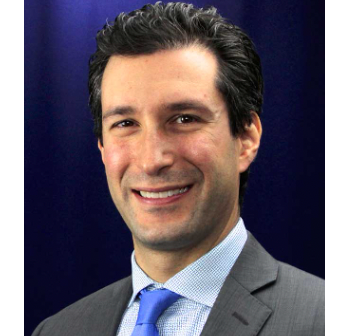This article was originally published in a sponsored newsletter.
The landscape for geographic atrophy (GA) secondary to AMD is experiencing its largest shift ever with 2 treatment agents that recently received FDA approval: pegcetacoplan (Syfovre; Apellis Pharmaceuticals, Inc), a complement C3 inhibitor, and avacincaptad pegol (Izervay; Iveric Bio, Inc), a complement C5 inhibitor. However, the following considerations may shape how retinal physicians offer these agents to their patients.
Treatment Burden
The addition of 2 GA treatment agents increases patient volume, which makes it difficult to integrate a new monthly or every-other-month injection population quickly in our clinics. To mitigate potential overload, we recommend that physicians evaluate real-world experiences and only identify patients who would benefit most from these treatments.
Real-World Experiences
Together with Apellis Pharmaceuticals, the ASRS Research and Safety in Therapeutics (ReST) committee initially reported eight real-world cases of occlusive retinal vasculitis since pegcetacoplan’s approval, and we expect further updates in the near future. Safety results in the Phase 3 DERBY and OAKS studies (total N=1,258 patients), which investigated both subfoveal and extrafoveal GA patients, also included 8 cases of ischemic optic neuropathy (ION) and 16 cases of intraocular inflammation.
As of October 1, 2023, avacincaptad pegol demonstrated one case of ION in GATHER1’s 18-month data and no cases of retinal vasculitis, both across real-world data and throughout newly reported 24-month data from phase 2/3 GATHER1 and phase 3 GATHER2 (total N=734). However, this medication was only investigated in extrafoveal GA patients, which is not representative of all our GA patients.
Both medications also presented an increased rate of conversion to neovascular AMD in their trials. Pegcetacoplan demonstrated a 12% and 7% conversion rate in the monthly and every-other-month groups respectively, compared to 3% in the control group through 24 months. Avacincaptad pegol demonstrated a 12% conversion rate vs 9% in the control group through 24 months. Physicians must consider these hazards before selecting patients for treatment.
Patient Selection
Considering both the increase to patient volume and the potential risks of adverse reactions, retinal physicians must be strict with patient selection criteria and vigilant in preserving vision. When evaluating and treating patients with bilateral disease, it may be beneficial to inject only one eye initially, though doing so will require a choice between the better-seeing eye to potentially preserve more vision, or the worse-seeing eye to prevent additional risk. Physicians should manage patients who receive these injections with heightened scrutiny and perform routine dilated exams focused on intraocular inflammation, retinal vasculitis, and optic neuropathy to ensure maximum benefit and minimize vision loss risk.
Despite their current limitations, the availability of these novel agents is the largest paradigm shift in treating GA—the largest unmet need in our field—and is the first step toward preserving patients’ vision.









